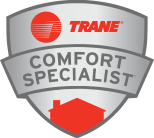When it comes to your air conditioning system in Salt Lake City, the energy efficiency rating really does matter. While you may be paying a bit more for products with higher energy efficiency ratings to begin with, you will certainly save a significant amount on your monthly cooling bills in the years to come.
Before you can evaluate your options in terms of energy efficient air conditioners, however, you will need to know how their efficiency is represented. Most air conditioners come with what is called a seasonal energy efficiency rating (SEER). A higher SEER means a more energy efficient model, and likely a higher price tag as well.
But how much more energy efficient is a SEER 10 air conditioning unit as opposed to a SEER 11? Well, the truth is that it is about 7% more efficient. However, a SEER 14 will be 23% more efficient than a SEER 10, but only 5% more efficient than a SEER 13 model.
While all of these numbers can help give you some context in which to evaluate the various air conditioners out there, they can only go so far. Turning these percentages into dollars is what you really have to do when you are trying to figure out what your monthly or yearly savings will be.
So to give you a bit of perspective, imagine that your annual cooling costs come to around $480 with your current SEER 10 air conditioning system. If you choose to upgrade to a SEER 13, you will save somewhere in the neighborhood of $110. But if you opt for the SEER 14 instead, you will gain an annual savings of closer to $140 compared to your current bill.
Of course, the SEER of a particular air conditioner is not the only thing that will cause the price of the unit to rise, nor is it the only thing that can cause your monthly cooling costs to rise. Air conditioners also need to be matched to the size of the space they will be asked to keep cool.
If the unit you have is too small to effectively cool the area in question, you are likely paying more than necessary in terms of cooling costs for less than ideal results. Similarly, if your unit is too big, you will be paying too much no matter how high a SEER rating it has. If you need help picking the unit that is right for you, contact your local professional.


